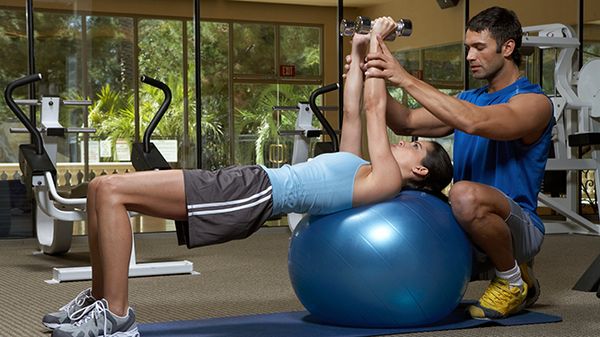Swim, bike, run -- lift? The triathlon is a tough sport, because it challenges athletes to compete in three disciplines, each of which is vastly different in terms of motor skills and the strength required to do them. In order to train properly, you have to spend ample time perfecting each discipline -- learning the technique, building up stamina in that discipline, and figuring out how to make your movements more efficient. This can be a tough order for competitors -- and that's probably most triathletes -- because not only do you have to build up your technique and endurance in three different sports, you most likely also have to schedule that training around a day job and family commitments. Although experts advise adding strength workouts to your triathlon training, who's really got time for them? Why should you incorporate strength training into your workout?
Strength training is an important part of fitness. Although cardiovascular exercise is important in building a strong heart, strong muscles also benefit your body in many ways. Together, cardio training and strength training build a better body; one that's stronger, more efficient and has more stamina.
Advertisement
Simply put, if you make the time to build up your lean muscle mass, your endurance capacity will increase. In a race like the triathlon, where you'll be pushing your body to its limit for a several hours, having the stamina to endure the entire race is important. Building up stamina through practicing each discipline can help, but it can really only take you so far. Stronger muscles will allow you to maximize your stamina and carry you for the entire race.
Many top triathletes have discovered that incorporating strength training was the key factor to improving their times. Developing strong, lean muscle mass through strength training also provides additional benefits for your body. Together, these benefits can greatly enhance your performance and help improve your finishing time.
Still skeptical? Let's take a look at how strength training can benefit triathletes.
Advertisement


